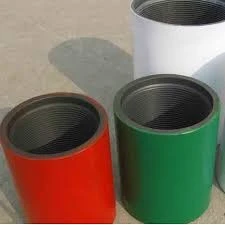- Afrikaans
- Albanian
- Amharic
- Arabic
- Armenian
- Azerbaijani
- Basque
- Belarusian
- Bengali
- Bosnian
- Bulgarian
- Catalan
- Cebuano
- Corsican
- Croatian
- Czech
- Danish
- Dutch
- English
- Esperanto
- Estonian
- Finnish
- French
- Frisian
- Galician
- Georgian
- German
- Greek
- Gujarati
- Haitian Creole
- hausa
- hawaiian
- Hebrew
- Hindi
- Miao
- Hungarian
- Icelandic
- igbo
- Indonesian
- irish
- Italian
- Japanese
- Javanese
- Kannada
- kazakh
- Khmer
- Rwandese
- Korean
- Kurdish
- Kyrgyz
- Lao
- Latin
- Latvian
- Lithuanian
- Luxembourgish
- Macedonian
- Malgashi
- Malay
- Malayalam
- Maltese
- Maori
- Marathi
- Mongolian
- Myanmar
- Nepali
- Norwegian
- Norwegian
- Occitan
- Pashto
- Persian
- Polish
- Portuguese
- Punjabi
- Romanian
- Russian
- Samoan
- Scottish Gaelic
- Serbian
- Sesotho
- Shona
- Sindhi
- Sinhala
- Slovak
- Slovenian
- Somali
- Spanish
- Sundanese
- Swahili
- Swedish
- Tagalog
- Tajik
- Tamil
- Tatar
- Telugu
- Thai
- Turkish
- Turkmen
- Ukrainian
- Urdu
- Uighur
- Uzbek
- Vietnamese
- Welsh
- Bantu
- Yiddish
- Yoruba
- Zulu
Understanding the Importance of Tubing Pup Joints in Oil and Gas Operations
Understanding Tubing Pup Joints A Key Component in Oil and Gas Operations
In the oil and gas industry, efficient and safe operations rely on a wide array of specialized components and equipment. Among these, the tubing pup joint plays a critical role in ensuring the effectiveness of drilling operations and the transportation of hydrocarbons from underground reservoirs to the surface. This article delves into the purpose, design, and significance of tubing pup joints in petroleum engineering.
What is a Tubing Pup Joint?
A tubing pup joint is a short section of pipe used in well completion and production operations. Typically ranging from a few inches to several feet in length, pup joints are manufactured from the same materials as the main tubing strings and can be threaded to fit seamlessly into existing assemblies. They serve as connectors that help adjust the length of the tubing string as needed, facilitating optimal well performance and accommodating variations in well conditions.
The Purpose of Tubing Pup Joints
The primary purpose of incorporating tubing pup joints into a wellbore is flexibility
. During drilling and production phases, the depth of the well, the nature of the geological formation, and other operational considerations can necessitate adjustments in tubing length. Tubing pup joints allow operators to customize the tubing string length to their specific needs without the requirement for extensive rework or replacement of the entire tubing assembly.Importantly, pup joints also play a role in minimizing tensile stress on the tubing string. By distributing loads more evenly along the entire length of the tubing, they help mitigate the risk of pipe failure. This capability is especially crucial in high-pressure environments, where the risks associated with pipe integrity cannot be overlooked.
Design and Specifications
The design of tubing pup joints is critical for their function in demanding oil and gas applications. Pup joints can be manufactured in various sizes, wall thicknesses, and material grades depending on the specific requirements of the operation. Common materials used include carbon steel and stainless steel, with special alloys employed in extreme conditions or corrosive environments.
tubing pup joint

Connections between pup joints and tubing are typically made using threaded joints or welded joints, ensuring a robust and leak-proof assembly. Additionally, the ends of pup joints can be configured to accommodate different types of connectors, allowing operators to create tailored solutions for their specific well configurations.
Significance in Production Operations
The oil and gas industry's reliance on tubing pup joints cannot be underestimated. These components offer several significant advantages that contribute to successful operations
1. Cost Efficiency Instead of replacing entire sections of tubing, operators can use pup joints to make precise adjustments. This flexibility leads to reduced costs associated with materials and labor.
2. Enhanced Safety With the ability to manage tension and prevent pipe failure, pup joints play an important role in maintaining the safety of drilling operations. A well-engineered tubing string reduces the risk of accidents associated with equipment failure.
3. Improved Production Efficiency Each well presents unique challenges, and tubing pup joints provide a quick and effective way to adapt the tubing system to optimize production rates. By ensuring appropriate depths and managing pressure conditions, the overall efficiency of hydrocarbon extraction can be enhanced.
4. Facilitating Maintenance In the event of maintenance or repairs, tubing pup joints provide operators with the flexibility to remove specific sections of tubing without disrupting the entire system. This accessibility is invaluable in maintaining continuous production and minimizing downtime.
Conclusion
In summary, tubing pup joints may be small components in the grand scheme of oil and gas operations, but their importance should not be overlooked. They provide essential adaptability in well design, enhance safety, and contribute to overall production efficiency. As the oil and gas industry continues to evolve and face new challenges, the role of tubing pup joints remains pivotal in facilitating effective drilling and production strategies. By understanding these components and their applications, industry professionals can make informed decisions that lead to safer and more efficient operations.
-
Tubing Pup Joints: Essential Components for Oil and Gas OperationsNewsJul.10,2025
-
Pup Joints: Essential Components for Reliable Drilling OperationsNewsJul.10,2025
-
Pipe Couplings: Connecting Your World EfficientlyNewsJul.10,2025
-
Mastering Oilfield Operations with Quality Tubing and CasingNewsJul.10,2025
-
High-Quality Casing Couplings for Every NeedNewsJul.10,2025
-
Boost Your Drilling Efficiency with Premium Crossover Tools & Seating NipplesNewsJul.10,2025







